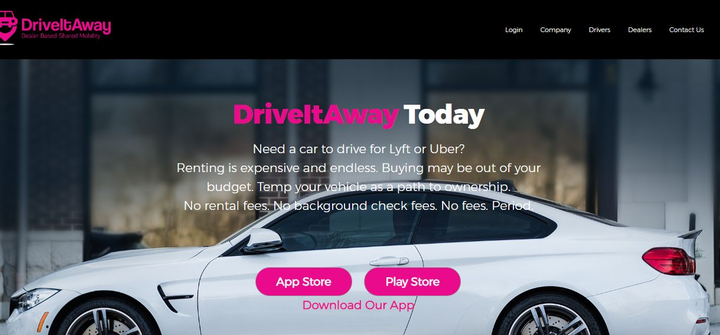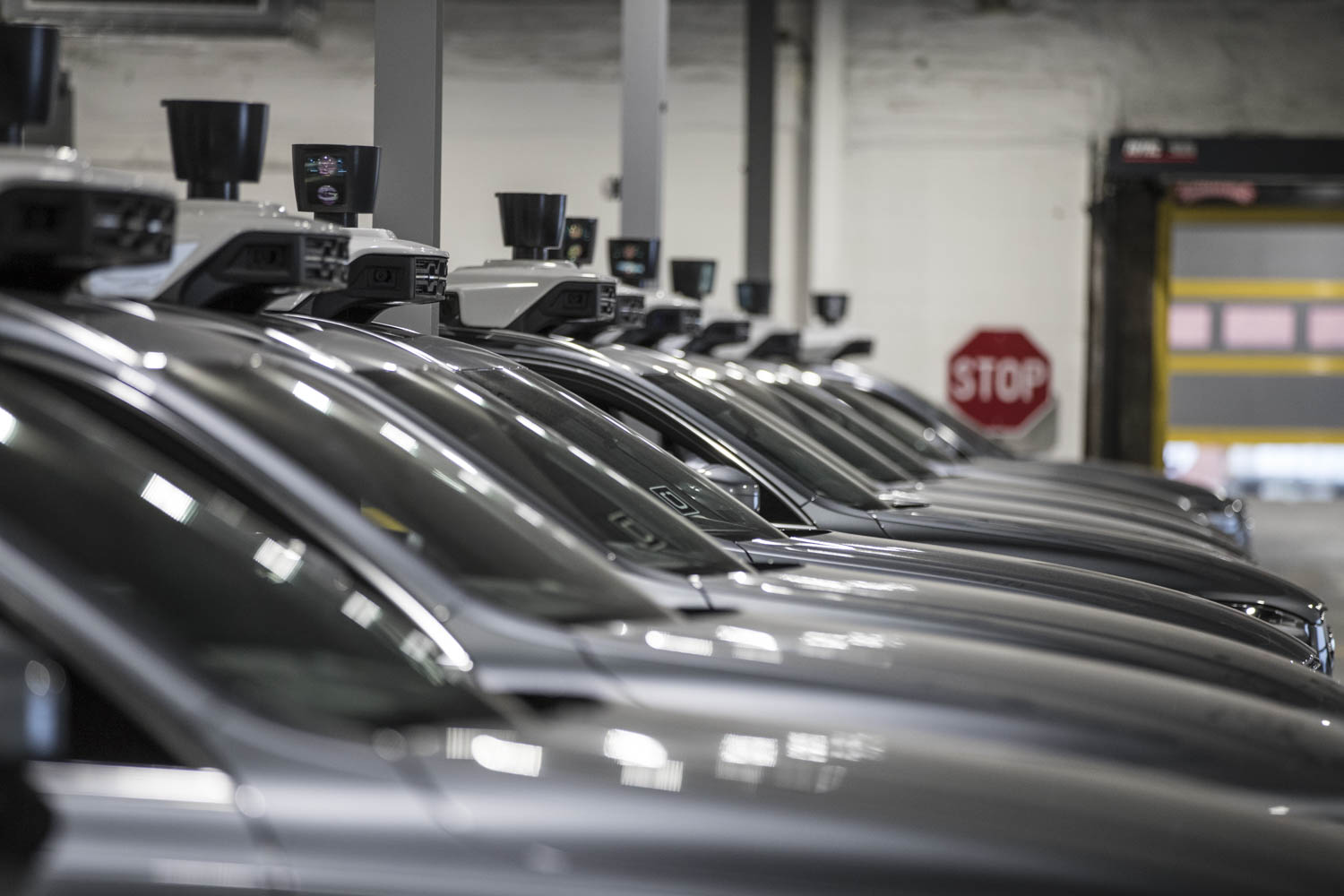DriveItAway’s new platform, created exclusively for car dealers, focuses on the “low hanging fruit” of current shared mobility offerings Screnshot via DriveItAway. The car rental app for ride-hailing drivers, DriveItAway, purchased the technology and assets of Whip Inc. and ended its partnership with HyreCar. The purchase of Whip included its operations and technology team lead by… Continue reading DriveItAway Buys Management Firm Whip, Cuts Ties with HyreCar
Tag: Uber
Future Tesla Autopilot chips may come from Samsung self-driving push
2017 Tesla Model S testing at Consumer Reports
The race to build self-driving cars is heating up, with Google (Waymo), Tesla, Uber, Lyft, Ford, GM (Cruise), and others all vying to build the first reliable self-driving system.
Now add Korean electronics giant Samsung to that list—with a twist. Its first client could be one of the major competitors in the business, Tesla.
Tesla once had a partner in developing self-driving software, Israel's Mobileye, when it first launched its Autopilot system to great fanfare in 2014.
DON'T MISS: Teslas to get new self-driving, Autopilot chip in spring 2019
After a widely reported fatal accident in Florida tied to the company's original Version 1 Autopilot system, which used the Mobileye hardware, Tesla has been on its own to develop the next-generation Autopilot 2 hardware.
In October, the company introduced new software that enabled full on-ramp to off-ramp self-driving in the system it calls Navigate on Autopilot, on existing Autopilot chips. CEO Elon Musk has since tweeted that with the upcoming faster chips, the system will be able to handle commuting from home to work without human intervention.
Industry sources told the Investors Business Times that Samsung has been on a hiring spree for electronics engineers with automotive experience.
CHECK OUT: Consumer Reports tests Tesla's Navigate on Autopilot
Musk announced in October that the company would roll out new, faster chips in the spring that will enable the company's long-promised Full Self-Driving Mode features, which many customers have pre-paid for. He tweeted that the new chip will be 50 to 200 times faster than the current hardware.
IBT sources say that Samsung has already begun assembling the chips expected to be rolled out to the Model 3 in March.
Central to Musk's plan to have Navigate on Autopilot work in more situations and on surface streets is having more drivers use the system and feed driving data back to Tesla's artificial intelligence servers. If a new chip is also on horizon, however, more data may not be enough.
READ MORE: Tesla drivers log 1 billion miles on Autopilot
Samsung has denied the rumors that it is forming a new self-driving car division.
The insiders noted that Samsung's practice is to line up a leading customer before launching new business lines.
With the Consumer Electronics Show on the horizon in Las Vegas early next month, it wouldn't be surprising to see the electronics giant introduce such a system there.
Green Car Reports reached out to Tesla for comment on this story, but had not heard back before publication.
Volkswagen to write off Gett investment – Spiegel
Volkswagen logos are pictured during the media day of the Salao do Automovel International Auto Show in Sao Paulo, Brazil November 6, 2018. REUTERS/Paulo Whitaker BERLIN (Reuters) – German carmaker Volkswagen (VOWG_p.DE) will write off its investment in Gett after the Israel-based ride hailing app failed to gain ground on bigger rivals Uber [UBER.UL], Lyft… Continue reading Volkswagen to write off Gett investment – Spiegel
SoftBank’s Vision Fund is preparing to invest $1 billion in Grab
SoftBank’s Vision Fund is set to continue its recent spree of investments in Asian tech unicorns. The mega fund — which is targeted at $100 billion — is planning to invest upwards of $1 billion into Southeast Asia’s ride-hailing leader Grab, two sources with knowledge of the plan told TechCrunch. The investment could reach as much… Continue reading SoftBank’s Vision Fund is preparing to invest $1 billion in Grab
BMW and Daimler may offer joint car app
Wednesday, 19/12/2018 14:08 BMW and Daimler are allowed to bundle their forces in car rental and driving services. According to the EU Commission, the US antitrust agency has now also approved the merger of Car2go and DriveNow’s car-sharing fleets with a total of around 20,000 rental cars, as the two automakers announced. The merger is… Continue reading BMW and Daimler may offer joint car app
‘Waymo’s not on our radar’ – Henrik Fisker on the future of premium shared mobility – Automotive World
At the tap of a button, your ride from the coffee shop to the airport has been confirmed – a ticker on the smartphone displays an approximate arrival time, and a pin highlights the exact pickup location. With little more than a whirr from its electric motors, a shuttle soon glides to the side of… Continue reading ‘Waymo’s not on our radar’ – Henrik Fisker on the future of premium shared mobility – Automotive World
First self-driving Uber returns since pedestrian death
First self-driving Uber returns since pedestrian deathUber Technologies Inc., which halted its self-driving car program after the death of a pedestrian in March, will return one or two self-driving cars to public roads in Pittsburgh on Thursday, the company said.
Uber said it received the all-clear from the Pennsylvania Department of Transportation this week. The self-driving car program has been suspended as the National Transportation Safety Board investigated the pedestrian fatality in Tempe, Arizona, and as state officials reviewed Uber’s authorization.
This is the first time Uber is returning autonomous vehicles to public roads since the accident. In order to collect data, Uber had previously deployed some autonomous vehicles in manual mode, meaning that human drivers were operating them at all times. On Thursday, Uber will also deploy cars in San Francisco and Toronto in the manual, human-driven mode.
True autonomous testing will resume in Pittsburgh, but it will be more limited than before. Uber’s cars will drive at speeds of 25 miles per hour or below, the company said. Uber announced a number of other safety measures, including improvements to braking, operator training and driver monitoring.
“Over the past nine months, we’ve made safety core to everything we do,” said Eric Meyhofer, head of Uber’s Advanced Technologies Group.
Read or Share this story: https://www.detroitnews.com/story/business/autos/mobility/2018/12/20/first-self-driving-uber-returns-since-pedestrian-death/38773691/
Learning from the past to move forward
Learning from the past to move forward UberATGBlockedUnblockFollowFollowingDec 20 By: Eric Meyhofer, Head of Uber Advanced Technologies Group Developing self-driving technology is one of the biggest technical challenges of our time. If successful, these vehicles have the potential to make our roads safer and transportation more affordable for everyone. With these big challenges and possibilities come… Continue reading Learning from the past to move forward
Uber reboots its self-driving car program
Uber Advanced Technologies Group has officially resumed on-road testing of its self-driving vehicles in Pittsburgh, nine months after the company halted its entire autonomous vehicle operation after one of its vehicles struck and killed pedestrian Elaine Herzberg in the Phoenix suburb of Tempe. The relaunch follows the Pennsylvania Department of Transportation decision to authorize Uber ATG… Continue reading Uber reboots its self-driving car program
Via Sees A Shared Future, Starting with the NYC Congestion Surcharge
Published December 19, 2018 9:00 am, Via NYC
Via Sees A Shared Future, Starting with the NYC Congestion Surcharge
Via riders saved more than $90M in New York by sharing rides in 2018
Via, the leading provider of shared rides in New York City, sees the congestion surcharge, effective January 1, as the next step in a greater vision of shared mobility in New York and around the globe. The congestion surcharge increases consumer focus on how we commute, and the low cost of the surcharge for shared rides as compared to private is a recognition that shared rides are a key piece of working towards solving the issue of congestion in our cities– something Via has been committed to since day one.
In 2018 alone, Via riders in New York saved more than $90M and 9.2M pounds of CO2 by sharing rides versus traveling private. More than 400K Via routes this year in New York City had least 5 pickups, and 95% of our rides since launch in 2013 in New York are booked as shared, which is significant as compared to self-reported data from Uber (20%) and Lyft (35%) overall.
“We applaud New York for treating shared rides differently than private rides when it comes to the cost of the surcharge, and we at Via see this as the next step in a greater vision of shared mobility here at home and worldwide. In fact, cities are already using Via’s technology to power their own shared transit, helping to bridge the gap between public transportation and private vehicles, reducing single occupancy vehicles on the road,” said Daniel Ramot, CEO and co-founder of Via.
Via introduced its dynamic routing technology for efficient shared rides in 41 new markets in 2018, 38 of which were partnerships with cities and organizations committed to evolving mobility for their residents, employees or students, for example. From Singapore where Via recently launched a dynamic, on-demand public bus service to Arlington, TX where the city replaced its fixed bus line with a fleet of Via’s vehicles to LA where Via is launching a service with LA Metro early this year—this is a world in which Via is well-versed.
Via’s platform and technology were designed to make sharing work, and this is what has separated Via from its competitors from day one. In fact, the TLC reported in 2018 that Via has the highest utilization rate of any for-hire vehicle service in New York City, highlighting the congestion reducing benefits of Via’s shared platform built on the bedrock of efficient, dynamic routing and “virtual bus stops” that match passengers headed in the same direction into a shared vehicle. The NYC Department of Transportation (DOT) took note, as Via is the only ride hailing organization that has been actively working with the DOT in New York to address congestion through shared rides with Gridlock Alert Days.
About Via:
Via is re-engineering public transit, from a regulated system of rigid routes and schedules to a fully dynamic, on-demand network. Via’s mobile app connects multiple passengers who are headed the same way, allowing riders to seamlessly share a premium vehicle. First launched in New York City in September 2013, the Via platform currently operates in the United States, and in Europe through its joint venture with Mercedes-Benz Vans, ViaVan. Via’s technology is also deployed worldwide through partner projects with public transportation agencies, private transit operators, taxi fleets, private companies, and universities, seamlessly integrating with public transit infrastructure to provide the most cutting edge on-demand mobility innovation.
Read more


